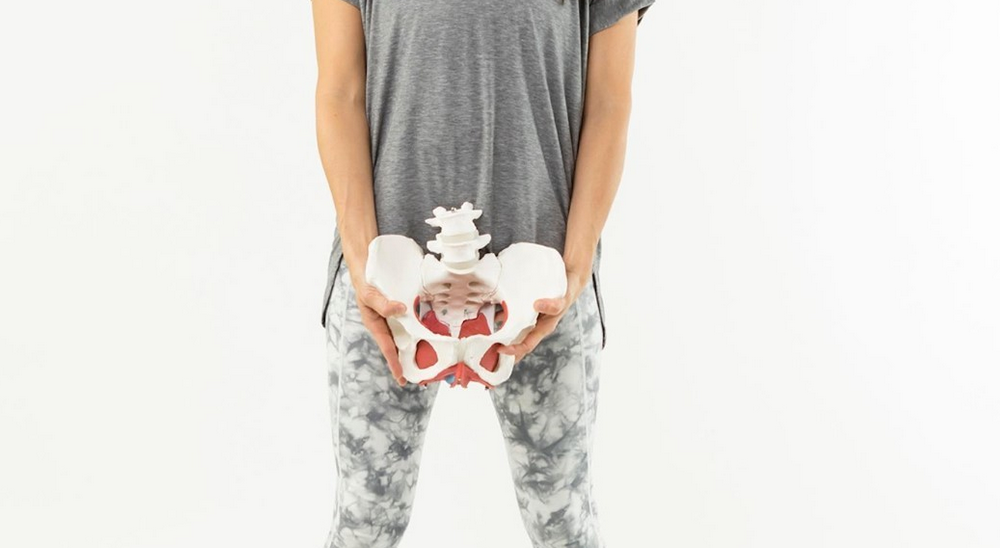
Want a healthier pelvic floor? The Vagina Whisperer Weighs In
You may have seen our recent conversation with board-certified pelvic health physical therapist Sara Reardon, aka The Vagina Whisperer, where we got real about pelvic floor health and why you should pay attention to yours! Well, turns out many of you love this topic as much as we do and we wanted to give more of you the chance to delve deeper into it. So Sara joined Emily again for a mini Q&A session where she tackles questions directly from our amazing community of mamas.
Prolapse...what is it? Can physical therapy help or do I have to have surgery?
Prolapse is basically when your pelvic organs drop lower into your pelvic cavity because of weakened or lengthened pelvic floor muscles. It feels like a heaviness in your pelvis, or like something is falling out of your vagina. Depending on how severe the prolapse is, you may be able to fully address it with physical therapy or you may need surgery, but either way PT is still valuable and necessary as part of your rehab! It’s also super important to address the root cause of the prolapse; changes in how you exercise or do certain activities may be needed as well.
What about prolapse and sex?
If you have a prolapsed organ you may experience changes in sensation or a decrease in sensation with sex. While you are working with your physical therapist to repair it you can, in the meantime, try alternate positions like spooning, hands and knees, or a low bridge with a pillow support under your tush to alleviate the gravity effect on your prolapse.

I’ve had a baby and sex is now painful...why and what can I do about it?
The first few times you have sex after giving birth may be mildly uncomfortable (dryness due to hormonal changes, sensitivity of the tissues, etc.) but that should resolve relatively quickly. If not, that’s a pretty good sign that something is out of the ordinary and needs attention. Could be scar tissue from a tear or episiotomy, could be cesarean scar restriction via the fascial connections to your pelvic floor, could be muscle tension...bottom line: sex shouldn’t be just tolerable, it should be enjoyable! If it’s not, call your friendly neighborhood pelvic floor PT and get an assessment.
Mama Pro-Tip → As Sara says, “pain with sex should be an “us” issue with your partner, not just a “me” issue.” Involve your partner in what you’re experiencing so that you can work together, along with doing your physical therapy exercises, to keep the bedroom party going.
I pee when I sneeze...help!
Ah, the “peeze”...along with coughing and laughing, peeing your pants when you sneeze is maybe one of the most common (and annoying) symptoms of pelvic floor muscle dysfunction. Despite what your mama friends may tell you, though, it doesn’t have to be an inevitable part of postpartum. It has to do with weakness or poor coordination in your pelvic floor sphincter muscles, so when you put pressure on your bladder and the proper sphincters aren’t closing, you leak. Best course of action is a pelvic floor assessment with a PT to find the cause and develop a plan to retrain your muscles.
If I had a C-section, do I need to worry about my pelvic floor?
Short answer is yes, because a lot of changes in the pelvic floor happen during pregnancy itself. You may still experience muscle weakness or pain/restriction from abdominal scar tissue with a belly birth...and because pelvic floor health is so integral to our overall health, it’s good to attend to it anyway!
Which pelvic floor exercises are safe while pregnant?
No exercises will be harmful to baby or mama, but there are certain areas Sara recommends you focus on depending on where you are in your pregnancy. For the 1st and 2nd trimesters, work on stability, strengthening, and building/maintaining healthy habits. Once you hit the 3rd trimester, switch your focus to relaxing and lengthening your pelvic floor muscles in preparation for birth.
Mama Pro-Tip → Tune in to the video around the 12 minute mark for specific ideas on what you can do in each trimester to benefit your pelvic floor!
Ok, you sold me...I’m going to try pelvic floor physical therapy! When can I expect to feel a difference?
It depends on what you’re coming in for! Sara’s first sessions with clients involve information gathering and an initial physical assessment (external and internal). Once a treatment plan is devised, most people are seen once a week for 3-6 months. She is also big on giving patients the tools to help themselves at home, so pelvic floor health can become an ongoing part of overall wellbeing.
Sara Reardon can be found @thevaginawhisperer on IG and at www.thevagwhisperer.com

































